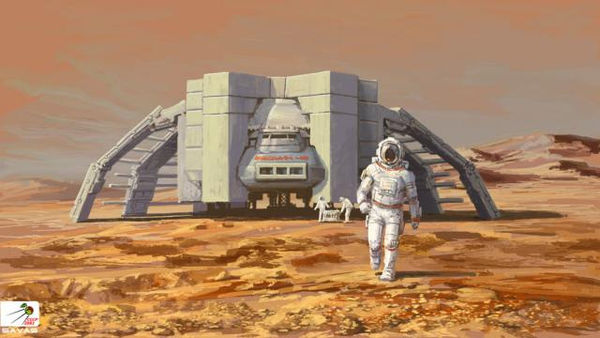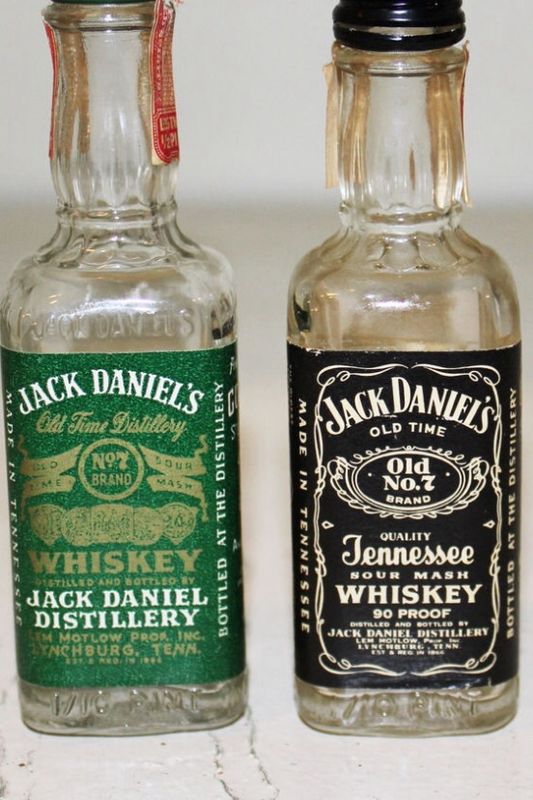Ready for Mars
Sep 10, 2015 10:32:47 #
Sure, visiting other countries is great. Trying new cuisines, seeing the sites, good times all around.
But what about traveling to a place far beyond our own lonely planet? You know what I'm talking about: Mars.
But surely we are still hundreds, if not thousands of years away from actually being able to live on the Red Planet?
Before you jump to any conclusions, check out these eight groundbreaking astronomic advances that could mean life on Mars might not be too far away.
1. First of all, you need a way to get there. Let me show you an ion thruster that goes 90,000 mph.
NASA's Evolutionary Xenon Thruster (NEXT) is a powerful new ion thruster, which is the fastest, most fuel-efficient propulsion engine ever built.
The thruster is lightweight, which means more room on spaceships for storing equipment. In addition, it can propel a spacecraft at speeds of up to 90,000 mph, which means getting to Mars (or beyond) a heck of a lot faster.
Oh yeah, it's also capable of running for five and a half years nonstop. We're getting into "Star Trek" territory here!
2. Of course, if your ship gets jacked up, you're out of luck. So bring along this crazy "Terminator"-style material that can repair itself when damaged.
In addition to developing newer, more mobile, and highly efficient spacesuits last year, NASA-funded research has also led to the creation of a "Terminator"-style self-healing material.
NASA combined two layers of polymer with a reactive liquid called thiol-ene-trialkylborane, which solidifies upon contact with the air to form a sort of next-level Silly Putty.
This technology could be used to defend astronauts (and their ships) from hurtling debris, but it has practical applications back here on Earth as well it could be used for everything from bulletproof armor to exhaust pipes on cars.
3. Fuel you need a lot of it. So this company wants to create a space elevator to save on consumption.
The Canadian tech company Thoth Technology was recently awarded a U.S. patent to begin developing a 12.4-mile-high, inflatable space elevator" to t***sport astronauts and materials much closer to orbit to launch and refuel ships. If completed, the elevator would save roughly 30% of the rocket fuel that is usually burned up exiting our atmosphere not to mention provide one heck of a view.
4. We can now grow lettuce in space, which could be a step toward farming on Mars.
Say goodbye to astronaut ice cream and powdered orange juice because NASA scientists have now successfully grown the first fresh greens in zero gravity.
Astronauts aboard the International Space Station used tightly packed pouches of soil, seeds, and slow-release fertilizer called plant pillows" to grow nearly four dozen red romaine lettuce heads over 33 days.
Three astronauts on the space station shared the snack on Aug. 10, and NASA's Scott Kelly said, "It tastes like arugula." Add some croutons and you're good to go.
It was one small bite for man, one giant leap for #NASAVEGGIE and our #JourneytoMars. #YearInSpace Scott Kelly (@StationCDRKelly) August 10, 2015
5. Farming with artificial intelligence is a real thing.
Speaking of space farming, I give you AstroGro. Presented at this year's NASA-sponsored International Space Apps Challenge, AstroGro is essentially a self-contained pot for growing plants both in and outside of a spaceship.
Here's how it works: A network of sensors monitor and optimize plant growth within the pot by mimicking Earth's environment in unearthly conditions recycling water, replenishing air, and automatically adjusting to gravitational differences. This means fresh, organic produce that can be grown using far less water than in traditional methods here on Earth.
The best part? The AstroGro could be built from existing 3D printers onboard the ISS.
6. Another culinary advance: We can possibly create food out of urine. (Let me explain.)
"Man vs. Wild" star Bear Grylls has long extolled the replenishing power of one's own urine in survival situations, and it appears that NASA feels the same way.
Mark Blenner, an assistant professor at Clemson University, and his team are attempting to prove that too. They were just awarded a $200,000 yearly grant by NASA to engineer a strain of yeast capable of growing from human waste products. (Yep, food made from urine. Mmmmmm.)
The yeast would not only produce much-needed food for lengthy missions, but it could also be used to generate omega-3 fatty acids and even polyester plastics capable of being used as a resource for 3D printing. Talk about whizardry, amiright?
7. Of course, you'll need somewhere to live. That's where these pre-packaged living quarters come into play.
The Paragon Space Development Corporation is in the early stages of building an environmental control and life support system" that could provide astronauts with ready-made, breathable living quarters on planets that are currently uninhabitable.
"If the will and the means are provided, we will see humans begin to explore and even colonize other planets in our lifetime," Grant Anderson, Paragon CEO and president, said in July. Sounds crazy, I know, but you have to credit the guy for being ambitious.
8. And finally, you're going to need some booze to toast once you get there. Grab some space-aged whiskey.
Because what good is traveling to Mars if we can't have a drink or 10 to celebrate our incredible accomplishments?
That's not the only reason Suntory Japan's oldest and most highly awarded distillery recently said it would send six samples of its whiskies to the International Space Station. The goal here, according to a Suntory spokesperson, is to learn what effect zero-gravity will have on the aging process of whiskey.
Previous research seems to imply that whiskey aged in environments with little change in temperature or convection tends to have a distinctly smoother taste than those aged the traditional way. So the next time you find yourself raising a glass of the good stuff with your family and friends, maybe take a moment to thank the scientists who made it go down so easy.
But what about traveling to a place far beyond our own lonely planet? You know what I'm talking about: Mars.
But surely we are still hundreds, if not thousands of years away from actually being able to live on the Red Planet?
Before you jump to any conclusions, check out these eight groundbreaking astronomic advances that could mean life on Mars might not be too far away.
1. First of all, you need a way to get there. Let me show you an ion thruster that goes 90,000 mph.
NASA's Evolutionary Xenon Thruster (NEXT) is a powerful new ion thruster, which is the fastest, most fuel-efficient propulsion engine ever built.
The thruster is lightweight, which means more room on spaceships for storing equipment. In addition, it can propel a spacecraft at speeds of up to 90,000 mph, which means getting to Mars (or beyond) a heck of a lot faster.
Oh yeah, it's also capable of running for five and a half years nonstop. We're getting into "Star Trek" territory here!
2. Of course, if your ship gets jacked up, you're out of luck. So bring along this crazy "Terminator"-style material that can repair itself when damaged.
In addition to developing newer, more mobile, and highly efficient spacesuits last year, NASA-funded research has also led to the creation of a "Terminator"-style self-healing material.
NASA combined two layers of polymer with a reactive liquid called thiol-ene-trialkylborane, which solidifies upon contact with the air to form a sort of next-level Silly Putty.
This technology could be used to defend astronauts (and their ships) from hurtling debris, but it has practical applications back here on Earth as well it could be used for everything from bulletproof armor to exhaust pipes on cars.
3. Fuel you need a lot of it. So this company wants to create a space elevator to save on consumption.
The Canadian tech company Thoth Technology was recently awarded a U.S. patent to begin developing a 12.4-mile-high, inflatable space elevator" to t***sport astronauts and materials much closer to orbit to launch and refuel ships. If completed, the elevator would save roughly 30% of the rocket fuel that is usually burned up exiting our atmosphere not to mention provide one heck of a view.
4. We can now grow lettuce in space, which could be a step toward farming on Mars.
Say goodbye to astronaut ice cream and powdered orange juice because NASA scientists have now successfully grown the first fresh greens in zero gravity.
Astronauts aboard the International Space Station used tightly packed pouches of soil, seeds, and slow-release fertilizer called plant pillows" to grow nearly four dozen red romaine lettuce heads over 33 days.
Three astronauts on the space station shared the snack on Aug. 10, and NASA's Scott Kelly said, "It tastes like arugula." Add some croutons and you're good to go.
It was one small bite for man, one giant leap for #NASAVEGGIE and our #JourneytoMars. #YearInSpace Scott Kelly (@StationCDRKelly) August 10, 2015
5. Farming with artificial intelligence is a real thing.
Speaking of space farming, I give you AstroGro. Presented at this year's NASA-sponsored International Space Apps Challenge, AstroGro is essentially a self-contained pot for growing plants both in and outside of a spaceship.
Here's how it works: A network of sensors monitor and optimize plant growth within the pot by mimicking Earth's environment in unearthly conditions recycling water, replenishing air, and automatically adjusting to gravitational differences. This means fresh, organic produce that can be grown using far less water than in traditional methods here on Earth.
The best part? The AstroGro could be built from existing 3D printers onboard the ISS.
6. Another culinary advance: We can possibly create food out of urine. (Let me explain.)
"Man vs. Wild" star Bear Grylls has long extolled the replenishing power of one's own urine in survival situations, and it appears that NASA feels the same way.
Mark Blenner, an assistant professor at Clemson University, and his team are attempting to prove that too. They were just awarded a $200,000 yearly grant by NASA to engineer a strain of yeast capable of growing from human waste products. (Yep, food made from urine. Mmmmmm.)
The yeast would not only produce much-needed food for lengthy missions, but it could also be used to generate omega-3 fatty acids and even polyester plastics capable of being used as a resource for 3D printing. Talk about whizardry, amiright?
7. Of course, you'll need somewhere to live. That's where these pre-packaged living quarters come into play.
The Paragon Space Development Corporation is in the early stages of building an environmental control and life support system" that could provide astronauts with ready-made, breathable living quarters on planets that are currently uninhabitable.
"If the will and the means are provided, we will see humans begin to explore and even colonize other planets in our lifetime," Grant Anderson, Paragon CEO and president, said in July. Sounds crazy, I know, but you have to credit the guy for being ambitious.
8. And finally, you're going to need some booze to toast once you get there. Grab some space-aged whiskey.
Because what good is traveling to Mars if we can't have a drink or 10 to celebrate our incredible accomplishments?
That's not the only reason Suntory Japan's oldest and most highly awarded distillery recently said it would send six samples of its whiskies to the International Space Station. The goal here, according to a Suntory spokesperson, is to learn what effect zero-gravity will have on the aging process of whiskey.
Previous research seems to imply that whiskey aged in environments with little change in temperature or convection tends to have a distinctly smoother taste than those aged the traditional way. So the next time you find yourself raising a glass of the good stuff with your family and friends, maybe take a moment to thank the scientists who made it go down so easy.
Sep 10, 2015 10:46:38 #
Don't take away Tang, I used to love that stuff as a kid.
I think I would still prefer to live on earth, Mars looks a little dry for me ;)
Also, drinking urine is for a psychological edge, and a horrible idea in any instance, it will only dehydrate one further.
It Is cool to see the new technologies that could someday be a reality though.
Thanks for the info
I think I would still prefer to live on earth, Mars looks a little dry for me ;)
Also, drinking urine is for a psychological edge, and a horrible idea in any instance, it will only dehydrate one further.
It Is cool to see the new technologies that could someday be a reality though.
Thanks for the info
Sep 10, 2015 10:51:09 #
the waker wrote:
Don't take away Tang, I used to love that stuff as a kid.
I think I would still prefer to live on earth, Mars looks a little dry for me ;)
Also, drinking urine is for a psychological edge, and a horrible idea in any instance, it will only dehydrate one further.
It Is cool to see the new technologies that could someday be a reality though.
Thanks for the info
I think I would still prefer to live on earth, Mars looks a little dry for me ;)
Also, drinking urine is for a psychological edge, and a horrible idea in any instance, it will only dehydrate one further.
It Is cool to see the new technologies that could someday be a reality though.
Thanks for the info
I probably will not be around to see this, but it is so interesting.
Sep 10, 2015 11:07:19 #
moldyoldy wrote:
I probably will not be around to see this, but it is so interesting.
Heck, I'm good w/ just the whisky ;)
Sep 10, 2015 11:16:36 #
Sep 10, 2015 11:56:50 #
moldyoldy wrote:
I am not sure about Japanese whiskey.
Right, right :)
Sep 10, 2015 12:22:03 #
Sep 10, 2015 16:02:08 #
moldyoldy wrote:
Sure, visiting other countries is great. Trying ne... (show quote)
a truly fascinating subject.there is no doubt that people will make take the trip to mars in the somewhat near future.

Sep 10, 2015 16:39:16 #
markinny wrote:
a truly fascinating subject.there is no doubt that people will make take the trip to mars in the somewhat near future.
Just take the elevator to the pent house.
http://science1.nasa.gov/science-news/science-at-nasa/2000/ast07sep_1/
Sep 10, 2015 18:36:37 #
moldyoldy wrote:
Just take the elevator to the pent house.
http://science1.nasa.gov/science-news/science-at-nasa/2000/ast07sep_1/
http://science1.nasa.gov/science-news/science-at-nasa/2000/ast07sep_1/
would love to see this all unfold in our life times.
great post.
Sep 10, 2015 21:22:47 #
moldyoldy wrote:
jack daniels is more my speed.
Considering your snarky postings the other evening, I should not provide you with beverages. Mayhaps if you imbibe both of the offerings, your posting will be less snarky, judgmental and so very insultingly broad in your comments.

Sep 10, 2015 22:11:56 #
AuntiE wrote:
Considering your snarky postings the other evening, I should not provide you with beverages. Mayhaps if you imbibe both of the offerings, your posting will be less snarky, judgmental and so very insultingly broad in your comments.
They are empty, that is cruel but not unusual punishment.
Sep 10, 2015 23:54:13 #
moldyoldy wrote:
They are empty, that is cruel but not unusual punishment.
Heh...heh...heh... 8-) 8-) 8-) :XD: :D
Sep 11, 2015 09:20:08 #
moldyoldy wrote:
I am not sure about Japanese whiskey.
Suntory Liquor is great for fuel when you're in a pinch. I used it once when we ran out of fuel. Smokes like crazy but made that JEEP run like it was jet fuel!
:lol: :lol: :lol:
SEMPER FI
Sep 11, 2015 18:07:52 #
moldyoldy wrote:
Sure, visiting other countries is great. Trying ne... (show quote)
wow Moldy
sounds like star wars is here
If you want to reply, then register here. Registration is free and your account is created instantly, so you can post right away.





